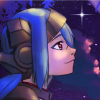This is a read-only snapshot of the ComputerCraft forums,
taken in April 2020.

How do i make a color UI?
Started by oxygencraft, 30 November 2015 - 07:07 AMPosted 30 November 2015 - 08:07 AM
I never did this before and I want some help with it. I want to have colored text, buttons etc.
Posted 30 November 2015 - 10:52 AM
First you need a compatible screen, if the computer is gold then you are good to go. (Normal computers/monitors don't have coloured screens)
You can use a gold monitor with a normal computer, just make sure that you are drawing to the monitor
Second you need to know the functions to use, look at the term api on the wiki you want to use the settextcolor and setbackgroundcolor functions.
Finally, the colors API pass to the settextcolour functions
You can use a gold monitor with a normal computer, just make sure that you are drawing to the monitor
Second you need to know the functions to use, look at the term api on the wiki you want to use the settextcolor and setbackgroundcolor functions.
Finally, the colors API pass to the settextcolour functions
Edited on 30 November 2015 - 09:54 AM
Posted 30 November 2015 - 09:41 PM
First you need a compatible screen, if the computer is gold then you are good to go. (Normal computers/monitors don't have coloured screens)
You can use a gold monitor with a normal computer, just make sure that you are drawing to the monitor
Second you need to know the functions to use, look at the term api on the wiki you want to use the settextcolor and setbackgroundcolor functions.
Finally, the colors API pass to the settextcolour functions
I know these functions but i want some actual code. I also have an advanced computer.
Posted 30 November 2015 - 10:56 PM
I am actually going to recommend the paintutils api as it is easier to use when you are first starting. Which can be found here
Little example for drawing:
To set up a button you will essentially just be telling the computer to listen for click events, and then checking to see if the coordinates returned by the event is within the area the button is drawn to.
example for a button (Example is set up to listen for the "button" we drew in the drawing example:
Hope this helps :P/>
Little example for drawing:
paintutils.drawBox(1,1,10,5,colors.blue) --# draws a blue box from the coordinates x = 1 to x = 10, and y = 1 to y = 5
To set up a button you will essentially just be telling the computer to listen for click events, and then checking to see if the coordinates returned by the event is within the area the button is drawn to.
example for a button (Example is set up to listen for the "button" we drew in the drawing example:
while true do --# repeating forever
local event, button, x, y = os.pullEvent("mouse_click") --# telling the computer to listen for mouse click events, button will equal which mouse button is pressed, x is the x coord, and y is the y coord
if x>=1 and x<=10 and y>=1 and y<=5 then
--# our button was pressed, so do stuff
paintutils.drawBox(1,1,10,5,2^math.random(0,15)) --# this is just for you to be able to visually see the button do something when pressed, this will randomly change the color of the button when it is pressed
end
end
Hope this helps :P/>
Edited on 30 November 2015 - 09:57 PM
Posted 01 December 2015 - 05:46 AM
I am actually going to recommend the paintutils api as it is easier to use when you are first starting. Which can be found here
Little example for drawing:paintutils.drawBox(1,1,10,5,colors.blue) --# draws a blue box from the coordinates x = 1 to x = 10, and y = 1 to y = 5
Could you give me a better example for drawing colors. And can I use the program paint to draw the colors?
Posted 01 December 2015 - 08:19 AM
You can make a file in CC paint and then have your program load and draw it to the screen using painutils (if this is what you are asking)
Posted 01 December 2015 - 09:04 AM
I am actually going to recommend the paintutils api as it is easier to use when you are first starting. Which can be found here
Little example for drawing:paintutils.drawBox(1,1,10,5,colors.blue) --# draws a blue box from the coordinates x = 1 to x = 10, and y = 1 to y = 5
To set up a button you will essentially just be telling the computer to listen for click events, and then checking to see if the coordinates returned by the event is within the area the button is drawn to.
example for a button (Example is set up to listen for the "button" we drew in the drawing example:while true do --# repeating forever local event, button, x, y = os.pullEvent("mouse_click") --# telling the computer to listen for mouse click events, button will equal which mouse button is pressed, x is the x coord, and y is the y coord if x>=1 and x<=10 and y>=1 and y<=5 then --# our button was pressed, so do stuff paintutils.drawBox(1,1,10,5,2^math.random(0,15)) --# this is just for you to be able to visually see the button do something when pressed, this will randomly change the color of the button when it is pressed end end
Hope this helps :P/>
I am still confused how to make buttons.
You can make a file in CC paint and then have your program load and draw it to the screen using painutils (if this is what you are asking)
But can I print text without messing up the colors?
Posted 01 December 2015 - 02:49 PM
There's not any magic behind making a button, all you do is put some color & text on a certain area, then check if a mouse_click event occurs in that area.
Here's an example utilizing nothing but basic commands. Obviously this isn't the shortest, nor the easiest way of doing it. However, this is essentially what all buttons are.
Most people use button APIs either written by themselvees or by others to handle the drawing and events. I have a few APIs I use for them, usually specifying a maximum and minimum for x and y, a background color, a text color, and some text. Sometimes the color values are hard-coded, and sometimes the max values are scaled according to the length of the text. I even created a Automatically scaling Button GUI, which takes a series of strings and a couple colors to create a menu. Obviously, this is extremely limiting to anyone who might use it, but it is extremely useful if you don't want to mess with placement of buttons and such.
Here's an example utilizing nothing but basic commands. Obviously this isn't the shortest, nor the easiest way of doing it. However, this is essentially what all buttons are.
Most people use button APIs either written by themselvees or by others to handle the drawing and events. I have a few APIs I use for them, usually specifying a maximum and minimum for x and y, a background color, a text color, and some text. Sometimes the color values are hard-coded, and sometimes the max values are scaled according to the length of the text. I even created a Automatically scaling Button GUI, which takes a series of strings and a couple colors to create a menu. Obviously, this is extremely limiting to anyone who might use it, but it is extremely useful if you don't want to mess with placement of buttons and such.
term.setBackgroundColor( colors.orange )
term.setCursorPos( 1, 1 )
term.write( string.rep( " ", 8 ) )
term.setCursorPos( 1, 2 )
term.write( string.rep( " ", 8 ) )
term.setCursorPos( 1, 3 )
term.write( string.rep( " ", 8 ) )
term.setTextColor( colors.blue )
term.setCursorPos( 3, 2 )
term.write( "Button" )
while true do
local event = {os.pullEvent()}
if event[ 1 ] == "mouse_click" and event[ 3 ] >= 1 and event[ 3 ] <= 8 and event[ 4 ] >= 1 and event[ 4 ] <= 3 then
break
print( "Button was clicked!" )
end
end
Edited on 01 December 2015 - 10:14 PM
Posted 02 December 2015 - 07:05 AM
There's not any magic behind making a button, all you do is put some color & text on a certain area, then check if a mouse_click event occurs in that area.
Here's an example utilizing nothing but basic commands. Obviously this isn't the shortest, nor the easiest way of doing it. However, this is essentially what all buttons are.
Most people use button APIs either written by themselvees or by others to handle the drawing and events. I have a few APIs I use for them, usually specifying a maximum and minimum for x and y, a background color, a text color, and some text. Sometimes the color values are hard-coded, and sometimes the max values are scaled according to the length of the text. I even created a Automatically scaling Button GUI, which takes a series of strings and a couple colors to create a menu. Obviously, this is extremely limiting to anyone who might use it, but it is extremely useful if you don't want to mess with placement of buttons and such.term.setBackgroundColor( colors.orange ) term.setCursorPos( 1, 1 ) term.write( string.rep( " ", 8 ) ) term.setCursorPos( 1, 2 ) term.write( string.rep( " ", 8 ) ) term.setCursorPos( 1, 3 ) term.write( string.rep( " ", 8 ) ) term.setTextColor( colors.blue ) term.setCursorPos( 3, 2 ) term.write( "Button" ) while true do local event = {os.pullEvent()} if event[ 1 ] == "mouse_click" and event[ 3 ] >= 1 and event[ 3 ] <= 8 and event[ 4 ] >= 1 and event[ 4 ] <= 3 then break print( "Button was clicked!" ) end end
I am still confused making buttons. But how do I use the API? Should I learn the function os.pullEvent()?
Posted 02 December 2015 - 11:37 AM
In order to make buttons, yes, you need os.pullEvent().-Snip-
I am still confused making buttons. But how do I use the API? Should I learn the function os.pullEvent()?
local event, button, xpos, ypos = os.pullEvent("mouse_click")
So lets say you have a button at x of 5, y of 2, and it goes until x:6 and y:3
local event, button, x, y = os.pullEvent("mouse_click") -- pull clicks
if x >= 5 and x <= 6 and y >= 2 and y <=3 then --This checks if x is within a box of x5 to x6, and if y is no higher than 3, but no lower than 2.
print("You Clicked The Button!")
end
Posted 02 December 2015 - 01:51 PM
os.pullEvent() basically pauses the program until an event occurs.
You can pass it an event name as a string so it will only listen, or let the program continue, when this specific event occurs.
This piece of code, for example, would loop forever and report any event message:
This next piece of code would only listen for "mouse_click" events:
You can pass it an event name as a string so it will only listen, or let the program continue, when this specific event occurs.
This piece of code, for example, would loop forever and report any event message:
while true do
local sEvent = os.pullEvent()
print("event " .. sEventname .. " occured")
end
This next piece of code would only listen for "mouse_click" events:
while true do
local sEvent = os.pullEvent("mouse_click")
print("event " .. sEventname .. " occured")
end
Edited on 02 December 2015 - 12:52 PM
Posted 03 December 2015 - 04:39 AM
SnipThat's some example code.local event, button, x, y = os.pullEvent("mouse_click") -- pull clicks if x >= 5 and x <= 6 and y >= 2 and y <=3 then --This checks if x is within a box of x5 to x6, and if y is no higher than 3, but no lower than 2. print("You Clicked The Button!") end
I am still confused with the code. I need an easier way to do it.
Posted 03 December 2015 - 08:27 AM
have you looked at touchpoint?
Posted 03 December 2015 - 11:17 AM
If you learn how to pull events yourself, you'll be able to do much more.SnipThat's some example code.local event, button, x, y = os.pullEvent("mouse_click") -- pull clicks if x >= 5 and x <= 6 and y >= 2 and y <=3 then --This checks if x is within a box of x5 to x6, and if y is no higher than 3, but no lower than 2. print("You Clicked The Button!") end
I am still confused with the code. I need an easier way to do it.
os.pullEvent() waits until ANYTHING happens on the computer. calling: event, button, x, y = os.pullEvent("mouse_click") waits until you click on the screen. the event, button, x, and y are now variables after you click the screen and can be manipulated and compared against other variables.
So lets say i wanted the player to click in the top left corner:
local myButton = {1,1} -- That created a table with the coordinates of the button, 1,1 being the first column and the first row.
local event, button, x, y = os.pullEvent("mouse_click")
--That waits until a click on the screen happens.
if x == myButton[1] and y == myButton[2] then --Checks to see if x is equal to the first cell in the table and if y is the second cell in the table.
print("You clicked the button") --prints a message when the button is clicked
end -- ends the if statement
Posted 03 December 2015 - 02:53 PM
You seem to want to know how to create a button object, as many people do. Since an object is just a table, this is easy:
local button = {}
button.x = 1
button.y = 1
button.maxx = 8
button.maxy = 8
button.text = "Button"
button.bColor = colors.blue
button.tColor = colors.red
function drawButton( b )
term.setBackgroundColor( button.bColor )
term.setTextColor( button.tColor )
for i = b.y, b.maxy do
term.setCursorPos( b.x, i )
term.write( string.rep( " ", b.maxx - b.x + 1 ) )
end
term.setCursorPos( b.x + (b.maxx - b.x - #b.text)/2, (b.y + b.maxy)/2 )
term.write( b.text )
end
function isClicked( b, x, y )
return b.x <= x and b.maxx >= x and b.y <= y and b.maxy >= y
end
drawButton( button )
while true do
local event = {os.pullEvent()}
if event[ 1 ] == "mouse_click" then
if isClicked( button, event[ 3 ], event[ 4 ] ) then
print( "Button was Clicked!" )
break
end
end
end
Posted 04 December 2015 - 08:31 PM
I am not that confused now. All I am confused about is the x and y. Should I just play around with the y and x? And also can I paint the button colors in paint?
Edited on 04 December 2015 - 07:34 PM
Posted 04 December 2015 - 10:14 PM
You can change x and y to your liking, but I would first experiment with maxx and maxy. Those values affect how wide and tall the button are, but (in my example) are not relative to the button.
To change the background color, simply change button.bColor. You could rig something up to use a paint-formatted image, but it wouldn't be easy.
To change the background color, simply change button.bColor. You could rig something up to use a paint-formatted image, but it wouldn't be easy.




